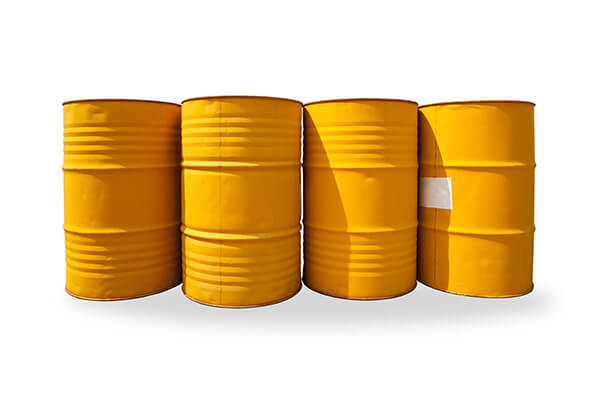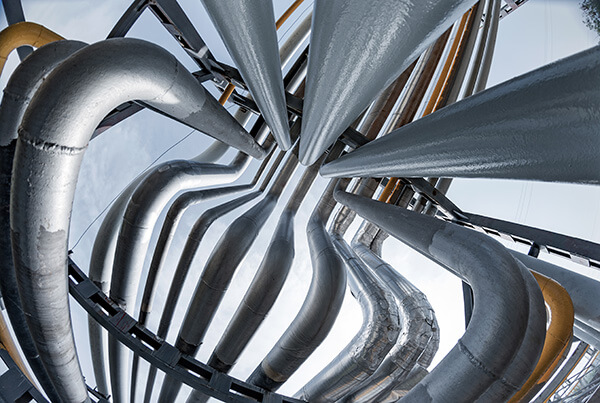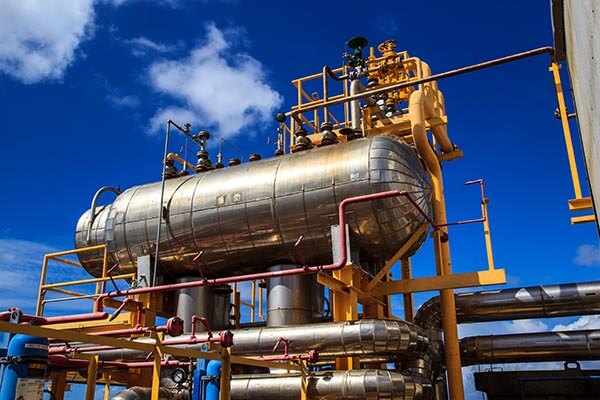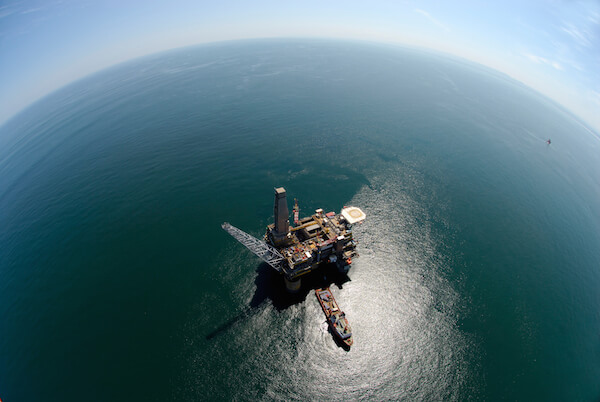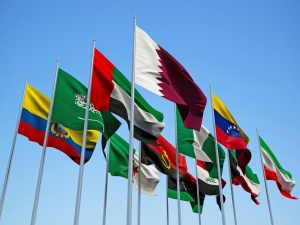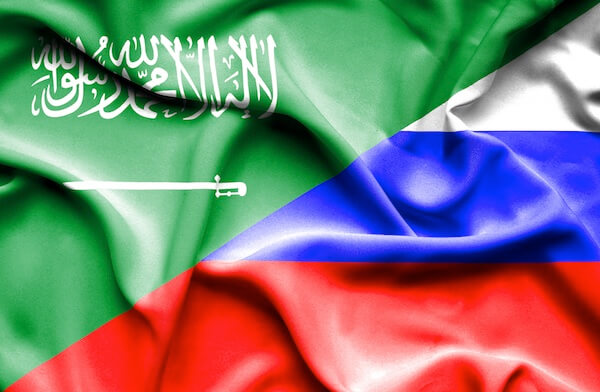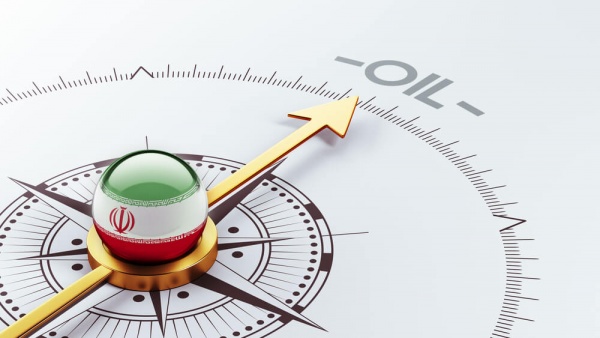Tag Archive for: OPEC
What Does OPEC’s Freeze Talk Really Mean?
/NewsHeading into the home stretch before a highly anticipated OPEC meeting in Algiers next week, crude industry experts and non-OPEC members alike are opining on what may happen to crude production.
Dave Pursell, managing director and head of macro research at Tudor, Pickering, Holt & Co. in Houston, told Rigzone the production freeze idea is based largely on optics.
“But, they’re raising expectations that there will be an agreement,” he said. “I think they need to do something, and the challenges are less now than they were earlier this year.”
Oil prices have tumbled from more than $100 per barrel in 2014, as prodigious supply outsized demand. More recently, crude prices have hovered in the low $40s.
As Pursell explained, OPEC members Iraq and Libya can’t produce more oil, anyway, at least in the near term. Iraq needs significant capital investment to move forward, and Libyan production is struggling under the weight of political unrest.
“The reality is the only reason you can get a freeze is because people can’t grow. The only spare capacity in the world sits inside of Saudi Arabia and Libya. That doesn’t mean Iran and Iraq can’t grow over time, and the rest of OPEC can’t grow a little bit over time, but it takes a ton of capital,” he said. “There’s no spare capacity that could easily be brought on.”
Still, Pursell said that even if a production freeze agreement is mostly for show, it’s not meaningless.
“But it’s important ‘show’ in that shows they can agree to something. There’s this notion that OPEC is irrelevant and my argument is that if OPEC is irrelevant, how come I’m talking about them every day? And so if they’re going to eventually have to cut – which we don’t think they will – but if they do, you first have to have an agreement to not increase,” he said. “You have to agree on something, and then if you have to make a harder choice down the road that you have to cut, there’s more confidence that it could actually be implemented.”
Many analysts, including Pursell, have said a cut is unlikely, though. Russia recently said it’s off the table. The nation’s energy minister told UPI there are no proposals to slash crude production. Alexander Novak said one option under review would be to maintain production rates at current levels for the up to six months.
According to a new Reuters’ story anonymous sources have said Saudi Arabia would be willing to cut its crude production if Iran will cap its oil output. Iran has steadfastly said it won’t consider a freeze until it has ramped production back up to pre-sanction levels, but that may soon happen.
Copyright: Rig Zone
Oil Bears Dominate Market as Doubt Grows Over Output Limits
/NewsThe longer OPEC and other producers talk about a ceiling on crude output, the more doubts grow in the market.
Money managers increased wagers on falling prices by the most in three months as a meeting between Russia and Saudi Arabia ended without specific measures to support prices. Producers have pledged to discuss action in Algiers later this month.
“The more they talk, the less people listen,” said Michael D. Cohen, an analyst at Barclays Plc in New York. “If you look at the actual statements from the Saudis, there’s not a lot of enthusiasm. They’re saying that either they don’t believe a substantial intervention is needed right now or that if other producers want a freeze, they’ll go along.”
Saudi Arabia’s Energy Minister Khalid Al-Falih said on Sept. 5 that he’s optimistic producers will agree to cooperate in Algiers. He spoke after meeting with his Russian counterpart, Alexander Novak, at the G-20 summit in China. Novak said that a freeze in production by OPEC and Russia would be the most effective way of stabilizing the market.
The International Energy Forum, including 73 countries that account for about 90 percent of the global supply and demand for oil and natural gas, will meet in the Algerian capital Sept. 26-28. The Organization of Petroleum Exporting Countries will hold informal talks on the sidelines of the gathering.
Parsing Words
“Everyone is sifting for clues on whether OPEC will reach an agreement to limit production or leave it uncapped with the potential for higher output,” said Tim Evans, an energy analyst at Citi Futures Perspective in New York. “At this point we’re waiting for the outcome of the talks. A lot of people are standing to the side while others are building positions with a specific view in mind.”
A freeze deal between OPEC members and other producers was proposed in February. A meeting in April ended with no accord because Iran refused to join, while Saudi Arabia insisted that its rival take part. Iran has said it’s too soon to cap output as it’s still restoring production curbed by sanctions.
Speculators bolstered their short position in West Texas Intermediate crude by 34,954 futures and options during the week ended Sept. 6, according to the Commodity Futures Trading Commission. Bets on rising prices declined.
Prices Drop
WTI futures dropped 3.3 percent to $44.83 a barrel in the report week and prices lost 1.6 percent to $45.15 at 9:18 a.m. New York time.
Futures surged Sept. 8 after the Energy Information Administration reported U.S. crude inventories fell 14.5 million barrels in the week ended Sept. 2, the biggest drop since January 1999. Prices retreated the next day as speculation grew the supply drop was a one-off caused by a tropical storm that disrupted imports and offshore production.
Money managers’ short position in WTI climbed to 130,274 futures and options. Longs fell 1.9 percent. The resulting net-long position dropped 19 percent. Net-long positions in Brent crude decreased by 37,226 contracts, according to ICE Futures Europe.
In other markets, net-bullish bets on gasoline declined 32 percent to 11,148 contracts. Gasoline futures dropped 9.1 percent in the report week. Net-long wagers on U.S. ultra low sulfur diesel tumbled 56 percent to 9,840 contracts. Futures declined 4.3 percent.
Gambling Momentum
“There’s a lot of gambling taking place,” said Stephen Schork, president of the Schork Group Inc., a consulting company in Villanova, Pennsylvania. “A lot of money managers are betting that a bottom has been put in but I’m skeptical.”
U.S. crude stockpiles remain at their highest seasonal level in more than 20 years. Refineries plan maintenance programs for September and October when fuel demand is lower. Over the past five years, refiners’ thirst for oil has dropped an average of 1.2 million barrels a day from July to October.
“The market will probably yo-yo in a range through the maintenance season but there’s downside risk,” Schork said. “If demand isn’t a strong as hoped and crude inventories rise, the market could take another leg lower.”
Copyright: Bloomberg
Iran’s Oil Minister to Join OPEC Talks on Market in Algeria
/UncategorizedIran’s Oil Minister Bijan Namdar Zanganeh will join an informal meeting of OPEC members next month in Algiers, a state news service reported, ending uncertainty about whether OPEC’s third-biggest producer would participate.
Producers from the Organization of Petroleum Exporting Countries will meet on the sidelines of an energy policy group in the Algerian capital next month to consider conditions in the oil market, OPEC’s president, Qatar’s minister Mohammed Al Sada, said on Aug. 8. Saudi Arabia, the world’s largest exporter, is working “to restore balance between supply and demand to support oil prices,” and OPEC and non-members will discuss potential steps in Algiers to stabilize markets, Saudi Energy Minister Khalid Al-Falih said on Aug. 13.
“I will participate in this meeting,” Iran’s Zanganeh was cited as saying by the oil ministry’s news service Shana. Zanganeh had not previously committed to attending the meeting, and he didn’t comment on the position Iran will take at the talks. Zanganeh also said he will meet with OPEC Secretary General Mohammed Barkindo “in the near future.”
Price Gains
Crude oil has gained about 11 percent since OPEC said it would meet informally to discuss prices and supply, on speculation that the group could agree to freeze output levels. Benchmark Brent crude was trading near $49 a barrel on Thursday in London.
A meeting of OPEC and other producing countries in April ended without agreement in Doha when Saudi Arabia demanded that Iran be part of the any deal to limit output. Iran had ruled out a ceiling on its production until it recovered the output levels it had before the U.S. and European Union tightened international sanctions on its oil industry in 2012.
Iran’s production has risen to 3.85 million barrels a day since sanctions were eased in January, Zanganeh said this month, still less than its target for the end of this year of 4 million barrels a day. OPEC as a whole has boosted output to record levels since adopting a Saudi-led decision in 2014 to protect the group’s global market share by forcing out higher-cost producers.
The International Energy Forum, comprising 73 countries that account for about 90 percent of the global supply and demand for oil and natural gas, will meet in Algiers on Sept. 26-28.
Copyright: Rig Zone
‘Well-Timed’ OPEC Talk Forces Oil Bears Into Record Reversal
/NewsOPEC has done it again.
Talk of a potential deal to freeze output helped push oil close to $50 a barrel and prompted money managers to cut bets on falling prices by the most ever. West Texas Intermediate, the U.S. benchmark, went from a bear to a bull market in less than three weeks.
OPEC is on course to agree to a production freeze because its biggest members are pumping flat-out, said Chakib Khelil, the group’s former president. Saudi Energy Minister Khalid Al-Falih said that the talks may lead to action to stabilize the market.
“This is all courtesy of some very well-timed comments from the Saudi oil minister,” said John Kilduff, partner at Again Capital LLC, a New York hedge fund focused on energy. “They’ve been successful over the last year in jawboning the market, and this is the latest example.”
Hedge funds trimmed their short position in WTI by 56,907 futures and options during the week ended Aug. 16, the most in data going back to 2006, according to the Commodity Futures Trading Commission. Futures rose 8.9 percent to $46.58 a barrel in the report week and closed at $48.52 a barrel on Aug. 19. WTI is up more than 20 percent from its Aug. 2 low, meeting the common definition of a bull market.
“This was a very short market so we were bound to get some covering,” said Stephen Schork, president of the Schork Group Inc., a consulting company in Villanova, Pennsylvania. “You probably won’t hear a lot from OPEC with prices up here, but if we get down to where we were a few weeks ago we can expect to hear more.”
Informal Talks
The Organization of Petroleum Exporting Countries plans to hold informal talks to discuss the market at the International Energy Forum next month in Algiers. Russian Energy Minister Alexander Novak said that the nation was open to discussing a freeze.
Talks to implement a production freeze collapsed in April when Saudi Arabia said it wouldn’t take part without Iranian participation. Iran was restoring exports after sanctions over its nuclear program were lifted in January.
Saudi Arabia, Iran, Iraq and non-member Russia are producing at, or close to, maximum capacity, Khelil said in a Bloomberg Television interview on Aug. 17. Saudi Arabia told OPEC that its production rose to an all-time high of 10.67 million barrels a day in July, according to a report from the group.
Ample Stockpiles
Declining crude and gasoline stockpiles in the U.S. also bolstered the market last week. Crude supplies dropped by 2.51 million barrels as of Aug. 12, Energy Information Administration data show. Gasoline inventories slipped 2.72 million barrels during the period. Stockpiles of both crude and gasoline remain at the highest seasonal levels in decades even after the declines.
“There’s a high level of uncertainty right now, so fairly small news can move the market a lot,” said Michael Lynch, president of Strategic Energy & Economic Research in Winchester, Massachusetts. “It still remains the case that we have a huge surplus of supply and aren’t going to see it disappear anytime soon.”
Money managers’ short position in WTI dropped to 163,232 futures and options. Longs, or bets on rising prices, increased 0.1 percent, while net longs advanced 56 percent, the most since July 2010.
In other markets, net-bearish bets on gasoline climbed 54 percent to 1,970 contracts. Gasoline futures rose 5.7 percent in the report week. Net-long wagers on U.S. ultra low sulfur diesel increased more than fivefold to 10,835 contracts. Futures advanced 9.8 percent.
Copyright: Rig Zone
Success through more efficient use of technology – DEA at EAGE 2016 in Vienna
/NewsFrom 30 May to 02 June, DEA is presenting recent projects and technology highlights at Europe’s most important technology event of the oil and gas industry, the 78th EAGE Conference and Exhibition.
“In exploration and production of oil and gas, sustained quest for technical solutions and the constant search for efficiency-enhancing concepts are daily business”, says Manfred Böckmann, Senior Vice President Exploration DEA Deutsche Erdoel AG.
These measures are a prerequisite for a continuing assurance of our high safety and environmental standards on the one hand and the economic viability of the projects on the other. In times of low oil prices, this is becoming increasingly important and the EAGE offers an ideal platform for the essential exchange of ideas and the discussion of new approaches, together with the experts of other E&P companies, the service industry and the representatives of science”, Böckmann adds.
At DEA’s booth (Stand No. 2230, Hall B), the visitors can experience live presentations of case studies from international DEA projects and are invited to discuss current industry topics with the DEA experts during the coming days.
DEA Deutsche Erdoel AG is an international operator in the field of exploration and production of crude oil and natural gas based in Hamburg. Its focus is on safe, sustainable and environmental conscious exploitation of oil and gas. DEA has 117 years of experience working along the whole upstream value chain as operator or project partner. With a staff force of 1,400 employees DEA has shares in production facilities and concessions in, among others, Germany, Norway, Denmark, Egypt and Algeria. Moreover, in Germany, DEA also operates large subsurface storage facilities for natural gas.
Copyright: Your Oil and Gas News
Oil Ends Steady Near $50; Best Monthly Gain in Brent in 7 years
/NewsOil prices ended steady on Friday after hitting 2016 highs but finished April trading about 20 percent higher, with Brent crude having its best monthly gain in seven years. A weaker dollar and optimism that a global oil glut will ease have lifted crude futures by more than $20 a barrel since they plumbed 12-year lows below $30 in the first quarter. Brent futures settled just a penny lower at $48.13 a barrel, after reaching a 2016 peak at $48.50. It rose 21.5 percent in April, its largest monthly advance since May 2009. U.S. crude futures closed 11 cents lower at $45.92 a barrel, after hitting a year-to-date high at $46.78. It gained 20 percent in April, the biggest monthly gain in a year.
With prices less than $5 away from $50 a barrel, investment bank Jefferies said the market “is coming into better balance” and would flip into undersupply in the second half of the year. But others warned that the rally was driven by investors holding large speculative positions, while oil stockpiles were still high, with a Reuters survey showing OPEC output in April rising to its most in recent history. “The issue is that we haven’t seen price rallies … correlate with fundamentals,” said Hamza Khan, senior commodity strategist at ING. “The fundamentals – high stocks, high production – haven’t changed.” Technical analysts said crude could cruise to $50 a barrel but stiffer resistance before $55 could spark profit-taking on the market’s biggest rebound in two years. Analysts polled by Reuters raised their average forecast for Brent in 2016 to $42.30 per barrel, the second consecutive month of increases.
Bank of America Merrill Lynch said in a note that “non-OPEC oil supply is indeed hanging off a cliff”, and estimated that global output would contract year-on-year in April or May for the first time since 2013. The OPEC survey aside, Saudi oil output was expected to edge up by 350,000 barrels per day to around 10.5 million bpd, sources told Reuters, as tankers filled with unsold oil floated at sea seeking buyers. The discount in spot U.S. crude to the next trading month meanwhile whittled to its smallest since January, reducing the advantages of storing oil in the United States for later delivery. (Additional reporting by Libby George and Karolin Schaps in LONDON and Henning Gloystein in SINGAPORE; editing by David Gregorio and Marguerita Choy)
Copyright: Rig Zone
Iran, India Sign MoU to Develop Oil, Gas Projects
/NewsOPEC member Iran and India – one of Asia’s fastest growing source of energy demand – signed a memorandum of understanding (MoU) to develop oil and gas projects, including the Farzad B gas field, Iranian Petroleum Minister Bijan Zangeneh told the Iran-India business conference held at Teheran Chamber of Commerce Saturday, Shana – a media linked to Iran’s Ministry of Petroleum – reported Sunday. “We had thorough conversations today and signed an MoU for development of Farzad B gas field, refinery cooperation, export of crude oil and petroleum products and mutual cooperation in petrochemical industry,” Zangeneh said.
The MoU was signed during a visit to Teheran by Indian Petroleum and Natural Gas Minister Dharmendra Pradhan, who, the Ministry said on its website April 7, hoped to engage “with the Iranian political leadership to work with them, particularly in the hydrocarbon, petrochemicals and fertilizers sectors for mutual benefits, including strengthening of India’s energy security.” According to Zangeneh, Indian investors should consider the development of the Farzad B project as a top priority, adding that “we hope decisions regarding the project’s development will be made before 2017.”
He said the Farzad B gas field can produce 3 billion cubic feet per day (Bcf/d) of natural gas, but Iran has signed an MoU with Indian developers for the production of 1 Bcf/d of natural gas from the field. A consortium comprising three Indian companies, including ONGC Videsh Ltd. and Oil India Ltd., made a gas discovery at the offshore Farzad B field in 2008.
Meanwhile, Zangeneh said both nations have agreed to set up major joint ventures and enhance their strategic relations, adding that “we hope Iranian and Indian companies reach out to each other and, under the new circumstances, the two countries boost their investments.” Indian companies have indicated to Zangeneh their interests to purchase natural gas from Iran to feed their petrochemical and other energy-consuming industries, Shana reported. On its part, Iran could deliver gas to Indian customers in Chabahar or any other ports where the Indians are willing to invest to feed methanol, steel and aluminium plants.
Separately, shareholders of Turkmenistan-Afghanistan-Pakistan-India (TAPI) Pipeline Company Limited signed an agreement in Ashgabat, Turkmenistan Thursday to invest $200 million in the TAPI natural gas pipeline. According to the Asian Development Bank (ADB), the investment includes funds for detailed engineering and route surveys, environmental and social safeguard studies, and procurement and financing activities, to enable a final investment decision, after which construction can begin. Construction is estimated to take up to 3 years.
According to Pakistan’s Minister of State for Petroleum and Natural Resources Jam Kamal Khan, TAPI would supply 487.3 billion cubic feet (Bcf) or 13.8 billion cubic meters (Bcm) of gas from Turkmenistan to meet the South Asian country’s growing energy demand, Indian daily The Economic Times reported Friday. Sean O’ Sullivan, ADB’s Director General of Central and West Asia Department, said the gas pipeline will unlock economic opportunities and diversify the energy market for Turkmenistan and enhance energy security for the region.
Ground breaking of the 1,127 mile (1,814 kilometer) -long TAPI pipeline, a project seeking to ease energy shortages in South Asia, was carried out in December 2015 year in Turkmenistan. The pipeline will be equipped to transport 3.2 billion cubic feet per day (Bcf/d) or 90 million standard cubic meters a day (MMscm/d) gas for 30 years, with India and Pakistan originally expected to receive 1.3 Bscf/d (38 MMscm/d) each, while the remaining 494.4 million standard cubic feet per day (MMscf/d) or 14 MMscm/d was to be supplied to Afghanistan.
So far, Turkmenistan is the only country that has started work to build its section of the TAPI pipeline. The pipeline will travel 480 miles (773 kilometers) through Afghanistan and 514 miles (827 kilometers) in Pakistan before ending at Fazilka in Punjab, India, The Economic Times said.
Copyrigth: Rigzone
Abu Dhabi’s Oil Chief Sees Crude Market Balancing by End of 2017
/NewsOil markets will probably balance by the end of next year, with prices rising in the medium term, according to Sultan Al Jaber, the new head of Abu Dhabi National Oil Co.
Prices, which have swung between highs of about $42 a barrel and lows of about $27 this year, will continue to be volatile in the short term, Al Jaber said in an interview with Abu Dhabi dailies The National and Al Ittihad.
Al Jaber, named the company’s chief executive officer last month, expects “to see a slow but upwards improvement in prices in the medium term,” according to a transcript of his comments published in The National. “2016 and 2017 will be the years during which markets will start to rebalance the gap between demand and supply.”
Abu Dhabi, the capital of the United Arab Emirates, holds about 6 percent of the world’s oil reserves. The U.A.E., a member of the Organization of Petroleum Exporting Countries, is among at least a dozen states that have said they’ll meet in Doha, Qatar, on April 17 to discuss a potential freeze in oil output to stabilize prices. European benchmark Brent crude slipped 0.7 percent to $38.41 a barrel as of 9:34 a.m. in London.
Adnoc, as the state company is known, is taking “into consideration prevailing market conditions” as it works toward a target to boost production capacity to 3.5 million barrels a day, Al Jaber said, without specifying the date when that level would be reached. The company is maintaining its current production level and aims to “remain a reliable supplier.”
The U.A.E. pumped about 2.89 million barrels a day last month, according to data compiled by Bloomberg. Abu Dhabi had been seeking to boost capacity to 3.5 million barrels daily by the end of 2017, while company officials have said the target may not beachieved until 2019.
Copyrigth: Bloomberg
Oil back below $40 as Iran dashes hopes for quick deal on output
/NewsOil fell around 3 percent on Monday after Iran dashed hopes of a coordinated production freeze any time soon, returning bearish sentiment over a supply glut that has sent prices crashing.
Global benchmark Brent crude futures LCOc1 fell back below $40 a barrel, trading at $39.27 at 1308 GMT, down $1.12 on Friday’s close. Brent hit a 12-year low of $27.10 in January.
U.S. crude CLc1 was down $1.09 at $37.41 a barrel.
“Oil is down because Iran said they would only join the output freeze group once they reached production of 4 million barrels a day,” said Tamas Varga, oil analyst at London brokerage PVM Oil Associates.
He was referring to comments by Iran’s oil minister Bijan Zanganeh on Sunday that the OPEC member would join discussions after its output reached that level.
Iran’s oil exports are due to reach 2 million bpd in the Iranian month that ends on March 19, up from 1.75 million in the previous month, he said.
Zanganeh met Russian counterpart Alexander Novak in Tehran on Monday but talks focused on long-running discussions about an oil and gas swap mechanism.
According to the Shana news agency, Zanganeh said Iran and Russia could cooperate on the swap, which would see Russia send oil and gas to northern Iran in return for Iranian supply to Russian customers in the Gulf.
Saudi Arabia appeared to have stuck to a preliminary deal with some other producers to freeze output, as its crude production held steady in February at 10.22 million barrels per day (bpd), an industry source told Reuters.
OPEC members and non-OPEC producers are likely to meet again in mid-April in Doha to discuss freezing output, OPEC sources told Reuters.
A March 20 meeting in Russia, which was part of an earlier plan, now looks unlikely.
Worries about demand fundamentals moved back into the spotlight as investment bank Morgan Stanley warned that a slowing global economy and high production would prevent any sharp rises in oil prices.
“Oil prices now seem to have bottomed, even though they are likely to stay subdued for the rest of this year before starting to move higher in 2017,” the U.S. bank said in a research note. It added that cheap oil had not provided the boost to growth that many had hoped for.
In a sign that investors are growing more skeptical about a rebound in oil prices, ICE data showed on Monday that speculators had cut net long positions in Brent crude by 9,500 contracts in the week to March 8.
Bjarne Schieldrop, chief commodities analyst at SEB Markets in Oslo, said a roughly 2 million bpd oil surplus would weigh down oil prices in the short term. The imminent restart of a pipeline between Iraq and Turkey and the breakdown in talks about a production freeze would add further downside, he said.
“We are likely to see $35 a barrel before we see $45 a barrel.”
Copyright: Reuters

Latest News
 Fundamental factors to strengthen Pemex12 August, 2019
Fundamental factors to strengthen Pemex12 August, 2019 Offshore Project Development: The Road to First Oil26 July, 2019
Offshore Project Development: The Road to First Oil26 July, 2019
